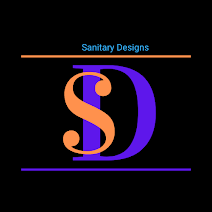Understanding Non-Hazardous Pharmaceutical Waste: Compliance and Best Practices
Pharmaceutical waste disposal is a complex and heavily regulated area in healthcare and long-term care settings. While most attention is given to hazardous substances, a significant portion of pharmaceutical waste is categorized as non-hazardous pharmaceutical waste. Understanding how to manage and dispose of this waste type is essential for ensuring environmental safety and regulatory compliance.
What Is Non-Hazardous Pharmaceutical Waste?
Non-hazardous pharmaceutical waste includes expired, unused, or partially used medications that do not meet the criteria for hazardous waste under federal regulations such as the Resource Conservation and Recovery Act (RCRA).
Examples include:
- Saline or dextrose IV bags
- Vitamin tablets or supplements
- Non-controlled over-the-counter medications (e.g., acetaminophen)
- Empty medication containers with trace residue
- Antibiotics without hazardous components
While not acutely toxic or reactive, non-hazardous pharmaceutical waste still requires proper handling and disposal to prevent environmental contamination and ensure public safety.
Why Proper Disposal Still Matters
Even though non-hazardous medications aren’t classified as dangerous by RCRA standards, improper disposal (like flushing down the drain or tossing into the trash) can lead to:
- Water pollution: Trace pharmaceuticals can enter water supplies
- Environmental accumulation: Affecting aquatic and soil ecosystems
- Legal risk: Violating local, state, or facility-specific policies
- Public health exposure: Potential for diversion or accidental ingestion
Thus, facilities must treat non-hazardous pharmaceutical waste with the same procedural rigor as hazardous materials.
Best Practices for Managing Non-Hazardous Pharmaceutical Waste
1. Segregation at Source
Label and separate non-hazardous medications from hazardous ones at the point of disposal. Use clearly marked bins specific to pharmaceutical waste streams.
2. Use of Proper Containers
Dispose of waste in DOT-approved containers designed for pharmaceutical waste, ensuring they’re sealed, leak-proof, and resistant to tampering.
3. Training for Staff
Regular training ensures that clinical and custodial staff understand which medications are classified as non-hazardous and how to manage them correctly.
4. Documentation & Manifesting
While not federally required for non-hazardous pharmaceuticals, maintaining logs helps with internal audits and future regulatory changes.
5. Partner with Licensed Waste Handlers
Work with a medical waste disposal service that offers programs specifically for pharmaceutical segregation and compliant removal.
Regulatory Framework
Though non-hazardous pharmaceutical waste is exempt from federal hazardous waste regulations, the following frameworks influence disposal:
- DEA Guidelines (for controlled substances)
- State-specific pharmaceutical waste laws (especially California, New York, and Minnesota)
- EPA’s Sewer Ban (2019): Prohibits flushing most pharmaceuticals, including non-hazardous waste, into wastewater systems
Healthcare and assisted living facilities should consult their state environmental agency for specific requirements.
Recycling and Mail-Back Programs
Some non-hazardous pharmaceutical items may qualify for recycling under certain programs, especially if they are unopened or expired stock in retail packaging.
Mail-back solutions offer a convenient way for clinics and nursing homes to return waste to a certified processor with built-in tracking and documentation.
Environmental Responsibility and Sustainability
Proper management of non-hazardous pharmaceutical waste contributes to:
- Safer communities
- Reduced landfill use
- Improved facility reputation
- Long-term environmental protection
Sustainable disposal practices, even for substances deemed “low risk,” demonstrate an organization's commitment to public health and compliance.
We care when we share....!
You may like these posts
Search for (SD) Blogs...?
List of Royal Followers
Labels
AD SPACE
Recent Posts
3/recentposts
All Time Hits Posts

Best Practices for Biomedical Waste Management
January 10, 2025

Why Proper Tattoo Waste Disposal Matters?
January 07, 2025

Role of Medical Waste Management Company For Public Health
September 11, 2024

Important Tips to Reduce Your Healthcare Waste
November 13, 2024

A Comprehensive Guide On Biohazard Waste Disposal in Tennessee
September 24, 2024

Common Mistakes When Disposing of Pharmaceutical Waste
November 06, 2024

A Detailed Guide On Pathological Waste
October 25, 2024
Popular Posts

A Detailed Guide on Proper Biomedical Waste Management
February 12, 2025

The Critical Role of Advanced Hospital Waste Management
April 30, 2025
Tags
- Biohazard Waste Disposal
- chemotherapy waste
- chemotherapy waste disposal
- dental waste disposal
- effective hazardous waste disposal
- hazardous trash
- hospital waste management
- Medical Waste Disposal
- Medical Waste Management
- pharmaceutical disposal
- pharmaceutical waste
- pharmaceutical waste containers
- pharmaceutical waste disposal
- sharps disposal
- Tattooist Waste Services
- veterinary waste disposal
- waste management
Recent Posts

Medical Waste Disposal Montgomery AL Told Through a Nurse’s Daily Work
December 15, 2025

Advanced Strategies for Effective Sharps Waste Disposal
December 19, 2024

Color Coding For Different Medical Waste Containers
August 01, 2024

Biohazard Waste Disposal Tennessee Guidelines By OSHA
July 31, 2024

Cradle to Grave Hazardous Waste: What Businesses Need to Know
August 01, 2025
Copyright Blogger | All Rights Reserved Royal Cricket Blog

0 Comments